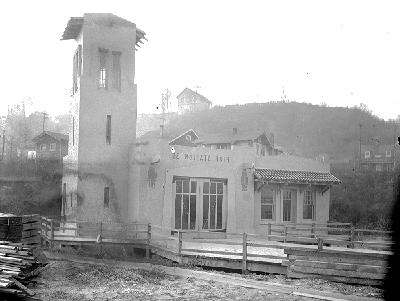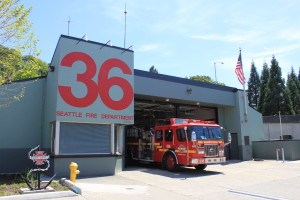Seattle, Washington | Seattle Fire Department’s rich fire history has been recorded from year-to-year that dates back to July 6, 1876, when it was an all-volunteer company named Seattle Engine Company No. 1. It was organized by a group of citizens convinced of their own growing town’s need for a dedicated fire-suppression organization. Various fire companies were visible in providing private services until 1883 when the City Charter was amended to create and fund equipment but not staff for a centralized Fire Department.
Seattle Fire’s first Fire Chief was Gardner Kellogg of the new established volunteer organization in 1889 and acting Fire Marshal in 1901. The volunteer organization survived into the late 1880’s, even during the Great Seattle Fire of 1889 which destroyed 30 city blocks and caused $12-$16 Million in damages. Soon after, the City acknowledged the part-time force did not have enough fire-suppression resources to meet their expanding need for fire protection and found itself the recipients of heavy pressure from the insurance industry and its own citizens. Ordinance No. 1212 in 1889 was passed by the Council which converted Seattle’s seven volunteer companies into a paid, professional of 32 men and into five fire districts.

Item No. 2688, West Seattle Fire Station No. 36, 23rd Avenue and Spokane Street, Seattle Fire Department Central Files, Record Series 2613-07. Seattle Municipal Archives. (1927)
Decades would soon pass after the creation of the professional Seattle Fire Department bringing a rapid increase in size and resources, as well as a higher rise in its resident population. In 1890, the population was recorded at 42,000 and showing a massive increase to 237,000 by 1910. In 1891, many iconic developments occurred with its maritime fire unit inception and with the deployment of their fire boat Snoqualmie in 1891, horse-drawn resources transitioned over to motorized fire engines in 1924 and development of firefighter-staffed emergency response aid cars were implemented during the 1930’s. They were also members of the historic founding of the IAFF in 1918 and became Charter members of their Department’s union Local 27, one 218 in the organization.
The Seattle Fire Department has moved away from just providing fire-suppression efforts as it did in its earlier days to critical services such as, building inspections, fire code enforcement, tactical rescues and public education. It is a fire-based two-tier response system providing pre-hospital BLS and ALS support services. There are six paramedic provider programs with SFD operating Seattle Medic One. The Department protects both lives and properties of their 634,535 residents and 768,000 during the day in a 83.9 square mile area including 193 miles (53 miles of tidal waters). It is listed at #22 on the Cities with populations of 100,000 and greater).
The Fire Department presents itself with 981 uniformed fire personnel with 207 on-duty strength, 38 Department Chiefs, 981 EMTs, 76 Paramedics and 84 non-uniformed (civilian) personnel. Additionally, There are 34 Fire Stations (Medic One HQ at Harborview Medical Center). There are 33 fire engines including on-duty Fire Boat, 12 Ladder Trucks, 4 Aid Units (BLS), 2 Air Trucks, 4 Fire Boats and 2 Hose Wagons.
Seattle Fire’s Station #36 is located at 3600 23rd Avenue SW, Seattle. This photo was taken in 1927. Presently, the station houses one engine company (E36), the department’s tunnel rescue unit and a marine specialty unit which serves the south end and in the Harbor Island/Delridge neighborhood community.
It was one of 32 neighborhood fire stations that was upgraded, renovated or replaced through the fire Facilities and Emergency Response Program which was approved by Seattle voters in 2003. This facility built-in 1971 was in general fair condition but required some seismic retrofits to meet current earthquake safety standards. Remodeling to enhance its operations was also part of the $1.7 million project.

Photo Credit: Seattle Fire Department (2014)
Some of the great station’s features are: bay space for two fire apparatus including the marine specialty unit, a decon/clean room, maintenance work area and battery charging alcove, storage for major disaster supplies and EMS equipment and hose dryer and storage alcove. For Admin/Crew areas, there is a station office, bunker gear room, beanery (kitchen) and dining room, weight/workout room, firefighter bunk rooms, toilet/shower rooms and laundry facilities.
As of 2015, E36 had 916 total responses with BLS response times of 4:38 minutes and ALS response times of 4:33 minutes. Fires were 5:52 minutes. Times have changed since then but no data is available at time of this posting.
(c) 2017 NW Fire Blog
Sources: SFD (11/2014), Seattle.gov Archived Documents,Wikipedia Rate this:Share this:




